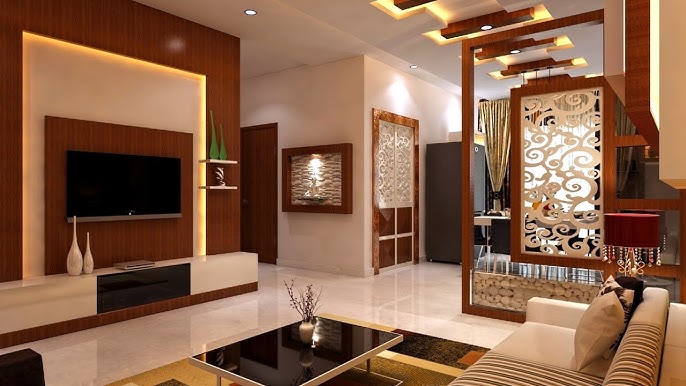Experience miami luxury interior design for a sophisticated and stylish lifestyle.
Experience miami luxury interior design for a sophisticated and stylish lifestyle.
Blog Article
Transform Your Home With Essential Principles of Interior Layout and Looks
By recognizing the effect of shade theory and the significance of appearance and patterns, one can develop areas that are not only aesthetically enticing yet likewise deeply personal. Attaining this stability involves even more than simple design; it encompasses a critical plan and a keen understanding of just how each aspect engages within an area.
Recognizing Shade Theory
Comprehending the concepts of color theory enables designers to develop spaces that reverberate psychologically with residents while satisfying functional requirements. Each group plays a vital role in developing harmony within a room.
The psychological effect of shades is extensive; warm colors such as reds and oranges stimulate energy and heat, while trendy tones like blues and environment-friendlies advertise calmness and serenity. The use of complementary colors boosts visual rate of interest, producing striking contrasts that can raise an area's allure.
Neutral shades, on the various other hand, function as a versatile backdrop, allowing other design elements to shine. It is important to think about aspects such as lights and the area's objective when choosing a shade combination, as these can change the understanding of colors throughout the day.
Ultimately, a well-considered color pattern can transform a room, promoting a sense of convenience and design that lines up with the citizens' choices. Proficiency of color theory is, therefore, an important ability for any kind of indoor designer aiming to develop unified and welcoming atmospheres.
Achieving Balance in Layout
Exactly how can designers attain a sense of stability in their areas? Attaining balance in layout is essential to creating unified interiors.
Unbalanced equilibrium, on the other hand, relies on varying aspects that still attain a cohesive appearance. This method permits for more vibrant and informal plans, providing rate of interest while keeping balance. By meticulously choosing differing sizes, colors, and appearances, designers can create a visually compelling room that feels balanced yet energised.
Radial equilibrium emphasizes a main focal point with aspects emitting outward. This style is generally seen in circular layouts, where furniture and decoration create a cohesive surround that attracts the eye internal.
Eventually, attaining balance requires thoughtful consideration of range, percentage, and the relationships between aspects. Architecture Firm. By masterfully using these equilibrium concepts, designers can change spaces right into settings that really feel both visually pleasing and functionally harmonious, improving the total experience for owners
Importance of Spatial Awareness

An eager sense of spatial understanding enables developers to recognize focal factors within an area, assisting the visitor's attention to key functions while preserving a general feeling of unity. It additionally assists in the strategic placement of lighting, which can drastically affect the assumption of room and state of mind. In addition, understanding spatial relationships makes it possible for the developer to deal with the certain demands of citizens, making certain that each location offers its designated purpose Architecture Firm without endangering visual appeals.
Ultimately, spatial understanding is critical for maximizing the possibility of any type of interior room. By carefully considering the interaction between measurements, design, and function, developers can develop atmospheres that not only fulfill functional requirements yet likewise evoke a sense of comfort and charm, improving the overall living experience.
Including Appearance and Patterns
Accepting a diverse variety of textures and patterns can significantly improve the visual and responsive allure of an indoor space. The calculated usage of different materials-- such as wood, metal, textile, and rock-- creates deepness and rate of interest, go to my blog making a room really feel more inviting and vibrant. For instance, incorporating smooth surfaces with rough structures can establish an equilibrium that draws the eye and engages the detects.
When integrating patterns, take into consideration both scale and repeating. Huge patterns can act as prime focus, while smaller sized, subtle layouts can match various other aspects without frustrating the area. Layering patterns, such as pairing floral paddings with candy striped throws, adds complexity and a feeling of consistency basics if executed thoughtfully.
It is also essential to maintain a cohesive shade palette, guaranteeing that structures and patterns collaborate instead than contend for interest. By selecting a few key textures and patterns, you can develop a linked visual that shows your individual design while improving the overall ambiance of the area. Inevitably, the cautious consolidation of these elements can transform an ordinary area into a sophisticated setting abundant with character and warmth.
Personalizing Your Space
Developing an area that reflects your individuality is crucial to achieving a truly welcoming atmosphere. Personalization in interior decoration allows you to instill your unique design and rate of interests into your home, changing it from a mere sanctuary into a refuge that speaks to that you are. Begin by choosing a shade combination that resonates with your emotions-- bold colors can invigorate, while soft tones use serenity.
Include artwork and style that show your interests, whether it be travel, nature, or abstract concepts. Displaying individual collections, such as publications, photos, or mementos, can evoke cherished memories and produce focal points within a space. Additionally, take into consideration customizing functional items, like upholstered furnishings, to line up with your visual preferences.

Final Thought
In verdict, the improvement of a home via the vital concepts of interior decoration and appearance necessitates a detailed understanding of shade concept, equilibrium, spatial recognition, appearance, and personalization. Each component contributes significantly to producing an unified and useful living environment - miami interior design. By attentively incorporating these principles, individuals can enhance the visual charm and emotional vibration of their areas, inevitably cultivating a home that mirrors unique identities while providing comfort and practicality
Report this page